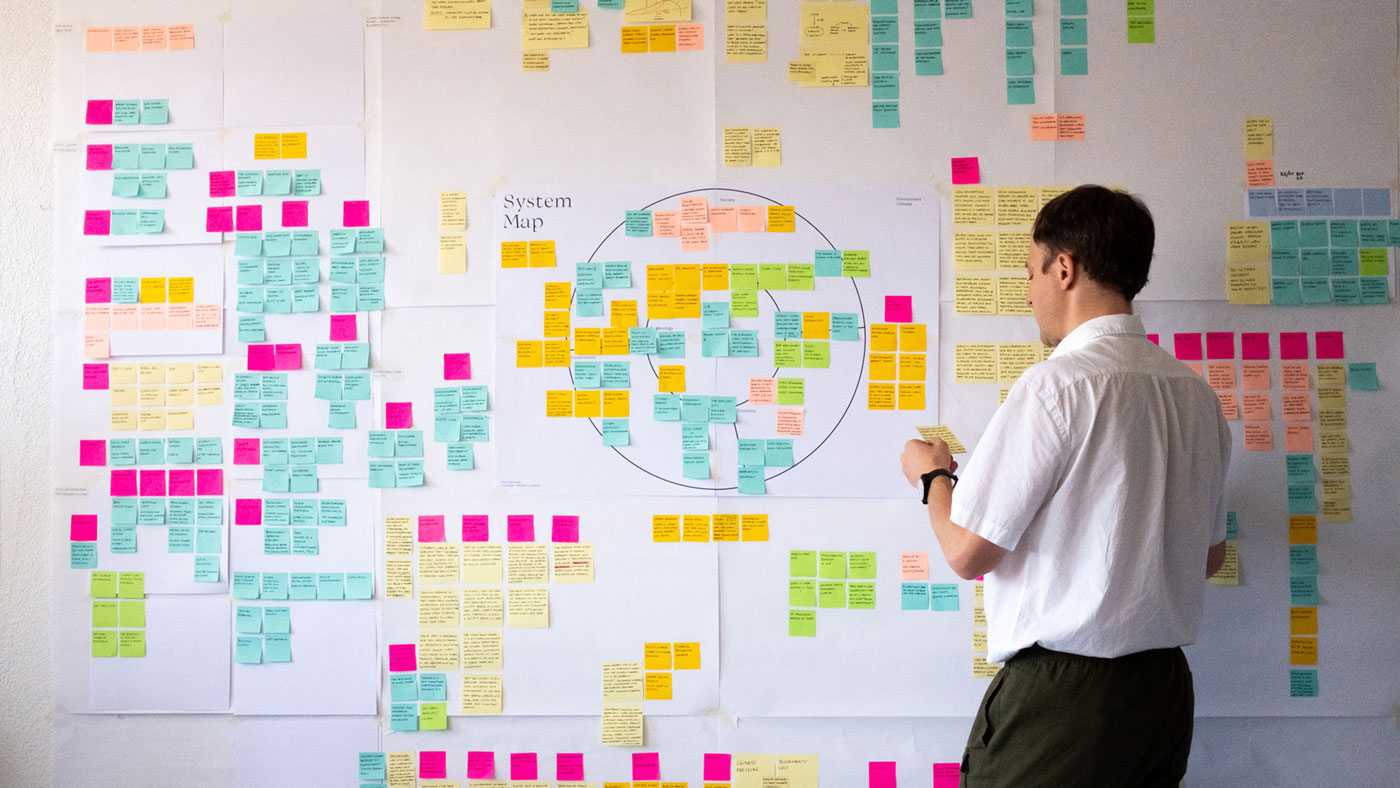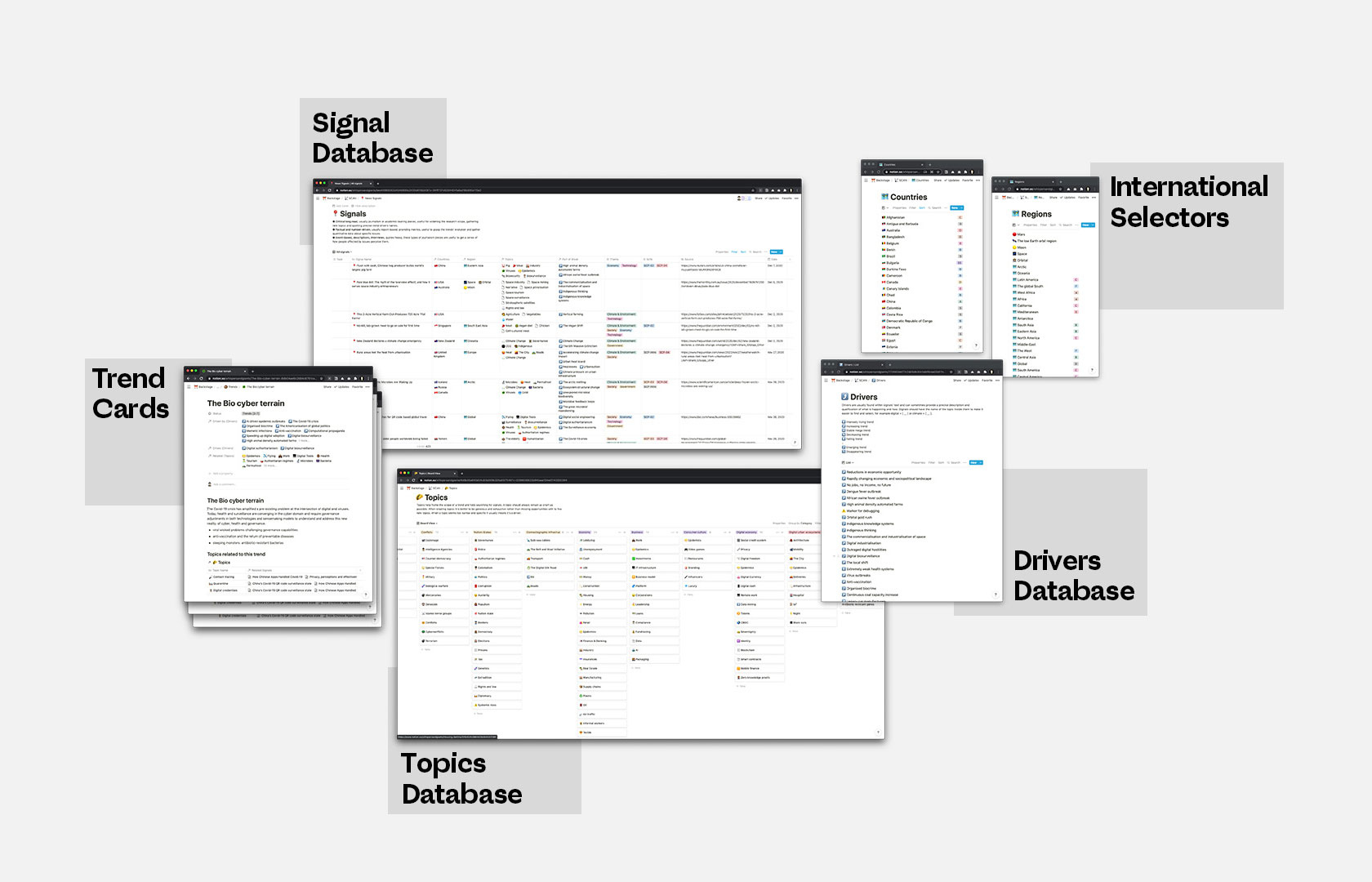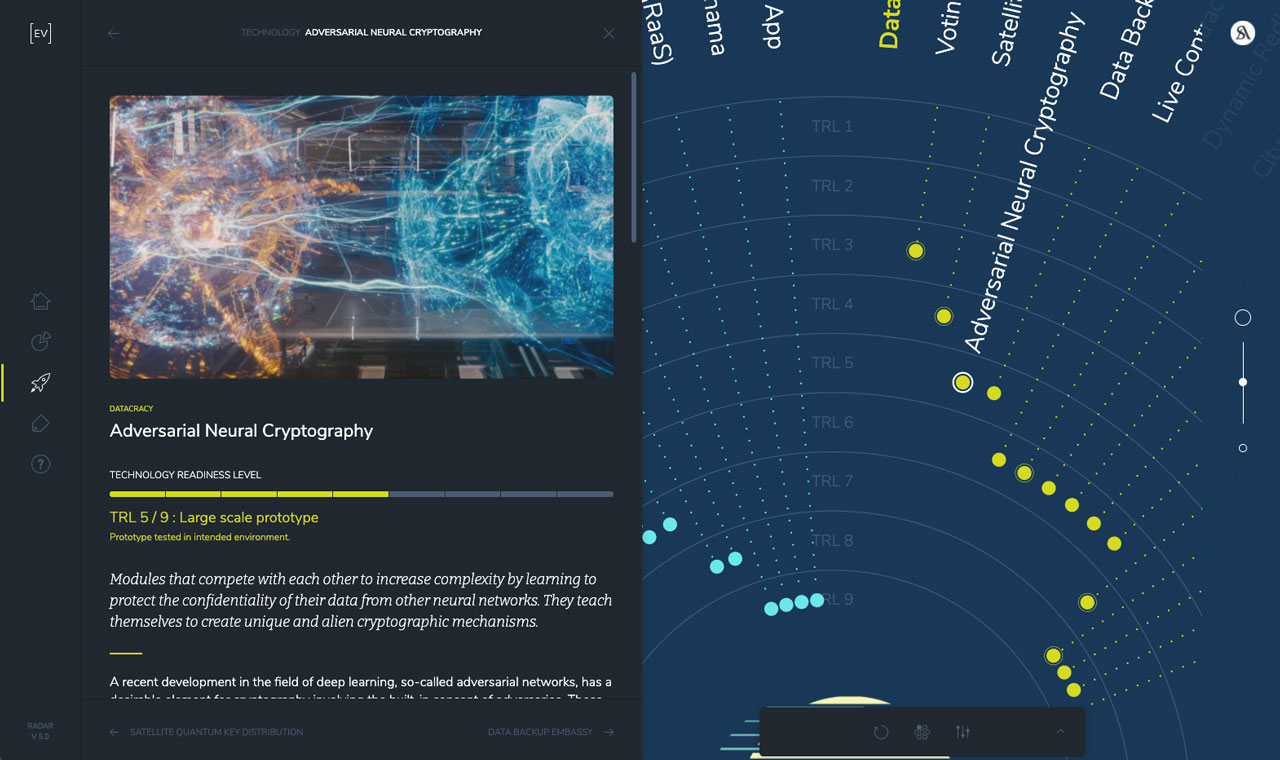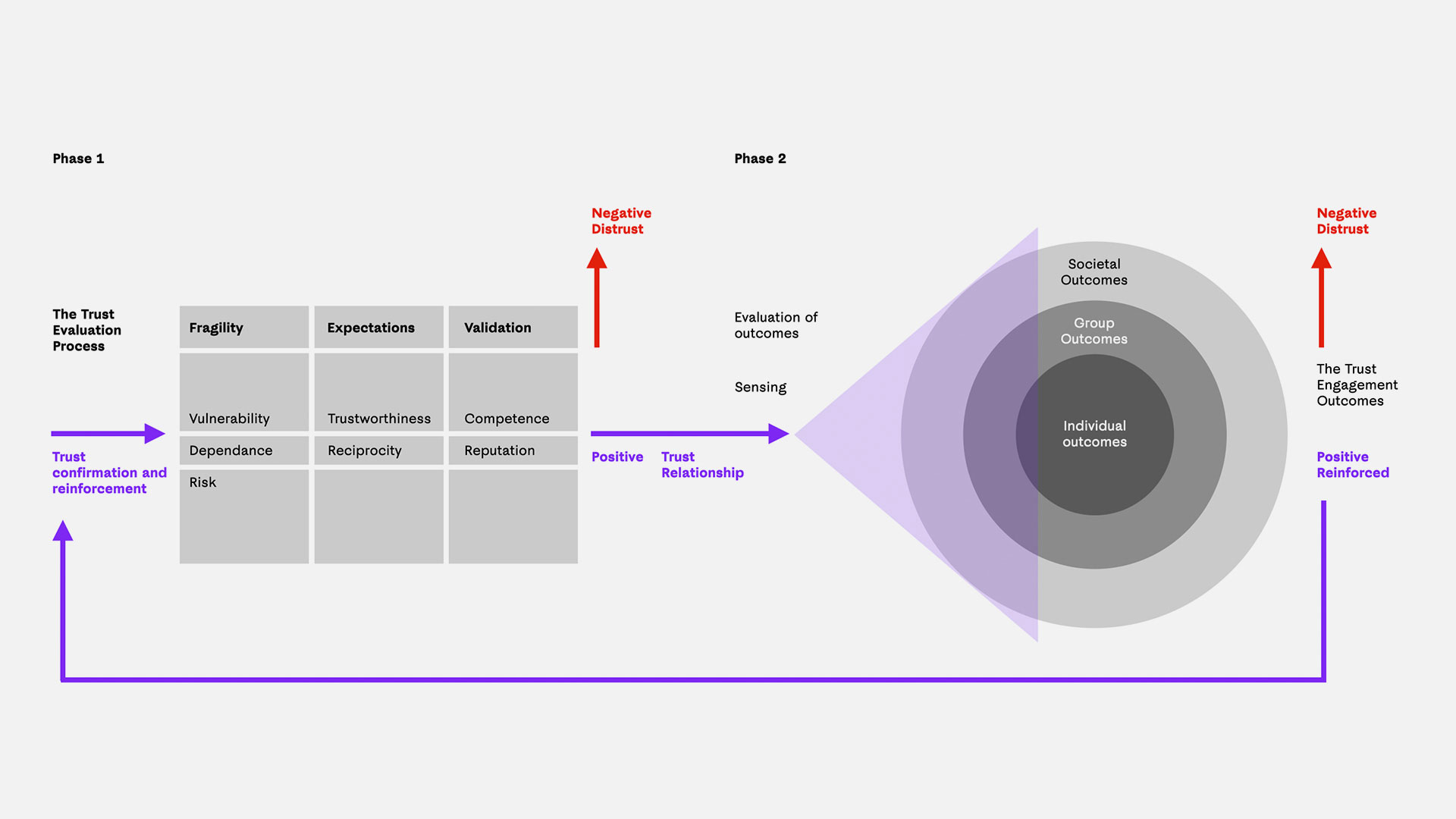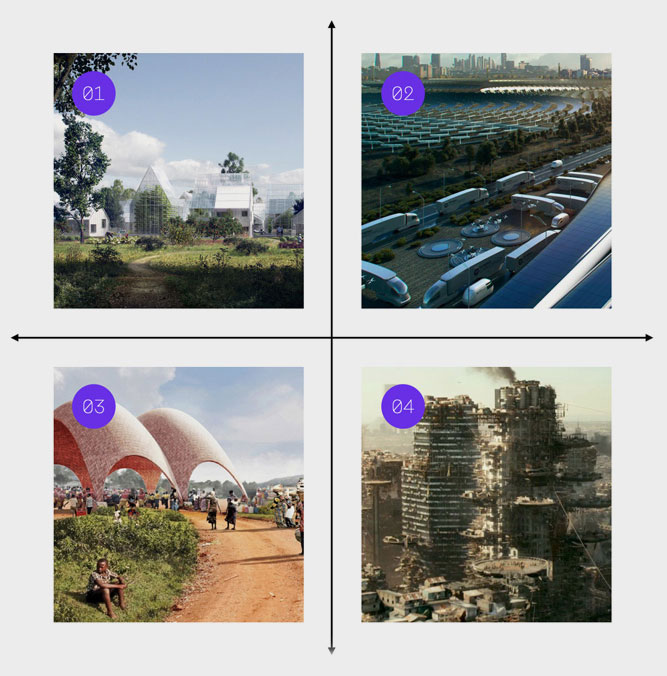How will the architectures of trust within societies adapt to the disruptive events of our time?




Overview
Trust Trajectories is a strategic foresight and speculative design exercise exploring signals of change and emerging trajectories in digital societies to imagine different futures and interfaces for trust beyond 2030.
Communicated through a series of diegetic interaction design artefacts, the project’s four future scenarios propose a conceptual frame for SICPA’s digital lab and R&D organisation to question their understanding of the present and use the collected insights to shape strategic decision making. The project asks powerful questions about potential product directions and the interaction dynamics they enable or facilitate, and the complex driving forces impacting shared infrastructure, cities and governance systems.
I designed the project brief and was a lead contributor from the research phase through to delivering an online exhibition, educational videos for an internal audience and workshop series with key stakeholders within the organisation.
Info
Strategic Foresight
Research & Insights
Speculative Design
Prototyping
Year
2021
Client
SICPA
Collaboration
Pascal Wicht
“Data-driven machine learning systems can make perfect predictions as long as history repeats itself. Creativity, innovation and development, however, require different kinds of anticipation.”
— Dr Ilkka TuomiStrategic Foresight
Approach
In order to contextualise and shape strategic decision making within SICPA’s R&D organization, the project used mixed-methods design research, alternative futures exploration and speculative interaction design in an attempt to ask new and relevant questions about trust across future societies. Undertaken during the Covid-19 crisis, a time of dense and rapid change, many of our assumptions about the future were quickly challenged while others were confirmed or adjusted.
Key project activities undertaken include ethnographic interviews with key stakeholders within SICPA; curating tech trends with the agency Envisioning; developing functional models of trust we could reapply; broad horizon scanning with a huge number of weak signals, trends and drivers; developing scenario narratives from trigger events, unpacking how citizens and institutions would react; causal layered analysis, unpacking the meaning of our different futures for the organisation; aggregating a collection of latent heuristics from previous workshops and the interviews that informed our prototyping; and the generation of interaction, UX and visual design tracks for the speculative artefacts.
Key project activities undertaken include ethnographic interviews with key stakeholders within SICPA; curating tech trends with the agency Envisioning; developing functional models of trust we could reapply; broad horizon scanning with a huge number of weak signals, trends and drivers; developing scenario narratives from trigger events, unpacking how citizens and institutions would react; causal layered analysis, unpacking the meaning of our different futures for the organisation; aggregating a collection of latent heuristics from previous workshops and the interviews that informed our prototyping; and the generation of interaction, UX and visual design tracks for the speculative artefacts.
